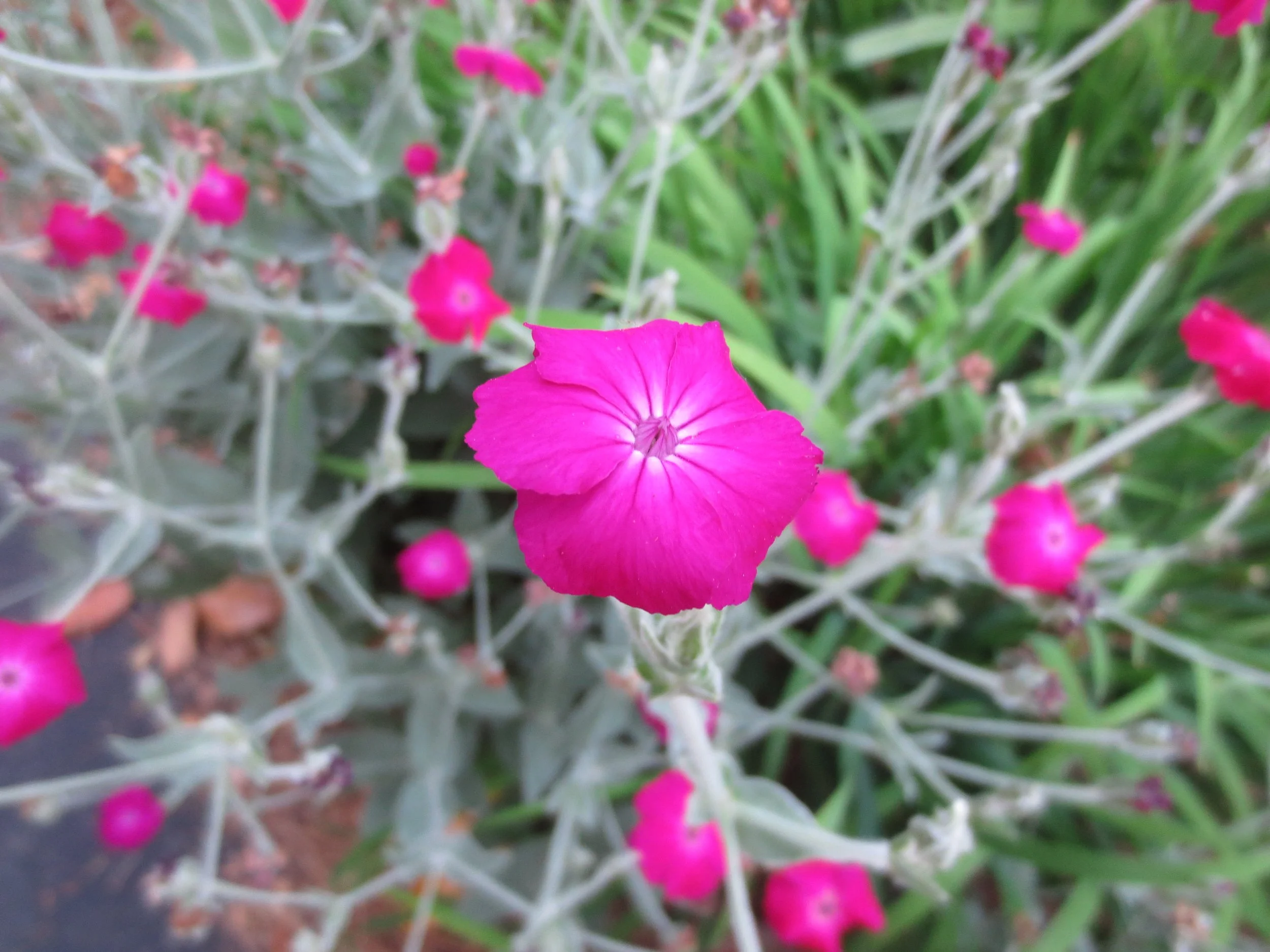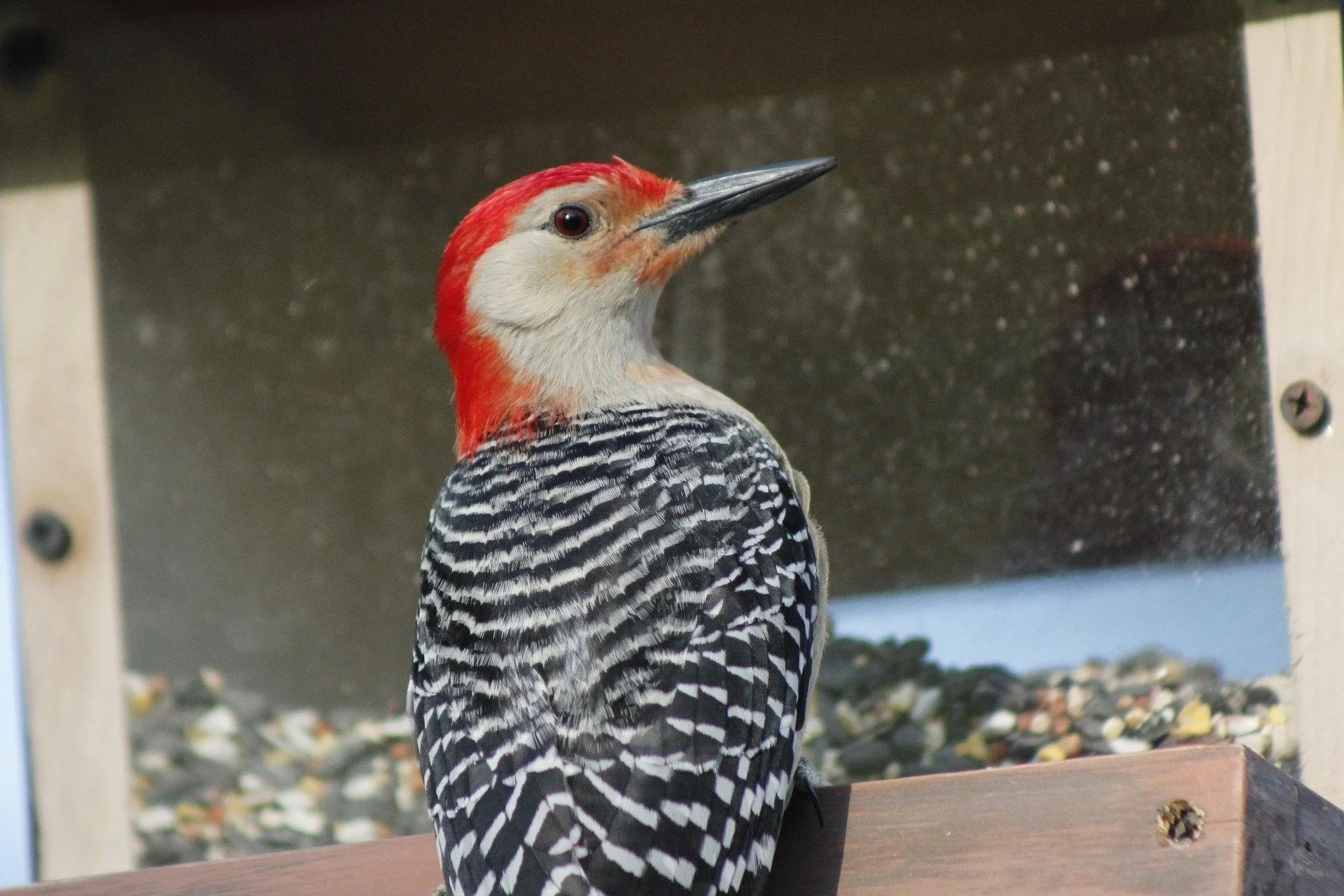Our rural location in upstate South Carolina is a bird mecca. We host a variety of bird species, large to small. One of my favorites is the pileated woodpecker, which are common across southeastern forests. Last summer, I tried repeatedly to capture a photo of these beautiful birds. We have at least six living in the woods near our home. They became accustomed to my presence in the front gardens, and would swirl and swoop around as if they were showing off their pretty black, white, and red plumage. Every time I popped the lens cover off the camera, however, they disappeared. When the lens cover went back into place, they would reappear. It was almost as if they were messing with me. I finally gave up, contented to see them at a distance, hear their distinctive calls, and witness their impressive excavation skills.
The first time I saw one of their squarish excavations, I did not realize what I was seeing. Later, I found that the tree was inhabited by large black ants, a favorite snack of the pileated woodpecker. Still later, I witnessed one going after the insects inside the bark of a tree stump near the driveway. The noise alone was impressive, but the shower of wood debris sent all directions was awesome.
Pileated woodpecker are big birds, almost as large as crows. Their heads are topped by neat red crests that make them easily distinguishable. The word pileated means capped. You can see large patches of white on their wings when they fly. The head crest on juveniles is smaller and less pointed, almost like a bird version of mohawk haircut.
As long as dead trees (“snags”) in our woodlands are not endangering buildings, driveways, or walking paths, we allow them to stand. These snags offer an ideal bird home. Woodpeckers seem to prefer tall trees over shorter ones. They raise one brood in a tree cavity, then abandon it and create a new cavity for the next brood. These excavated holes are used by other birds and small mammals. An average pileated brood consists of four eggs. Hatchlings fledge in about a month.
Pileated woodpeckers mate for life, but males and their females roost in separate cavities at night, even if they use the same tree. They are primarily insect-eaters but may also visit feeders, especially if suet is offered. They also eat fruits, nut, berries, and beetle grubs.
In late November, I misidentified a small bird that was visiting my prized Styrax japonica tree. I thought it was a juvenile pileated woodpecker, but when I approached, I realized that it was a redbellied woodpecker systematically destroying the tree’s bark. I kept shooing it away but this fella was not to be deterred. I eventually wrapped the tree trunk in hardware cloth, which he ignored. I then swaddled the entire tree in a garden mesh fabric. It looked awful but I was willing to do what had to be done to avoid the trunk being completely girdled and the tree killed. Aside: why, oh why, is a redbellied woodpecker so named, when it has a red head but not a red belly?
Pileated woodpeckers do not migrate. And I am happy to report that their populations are growing, a remarkable feat considering the housing growth in America taking over woodlands. Banded birds have been studied for their longevity. They have a lifespan of 12 years or so.
A male pileated woodpecker. The cheek stripe on a female is black instead of red.



